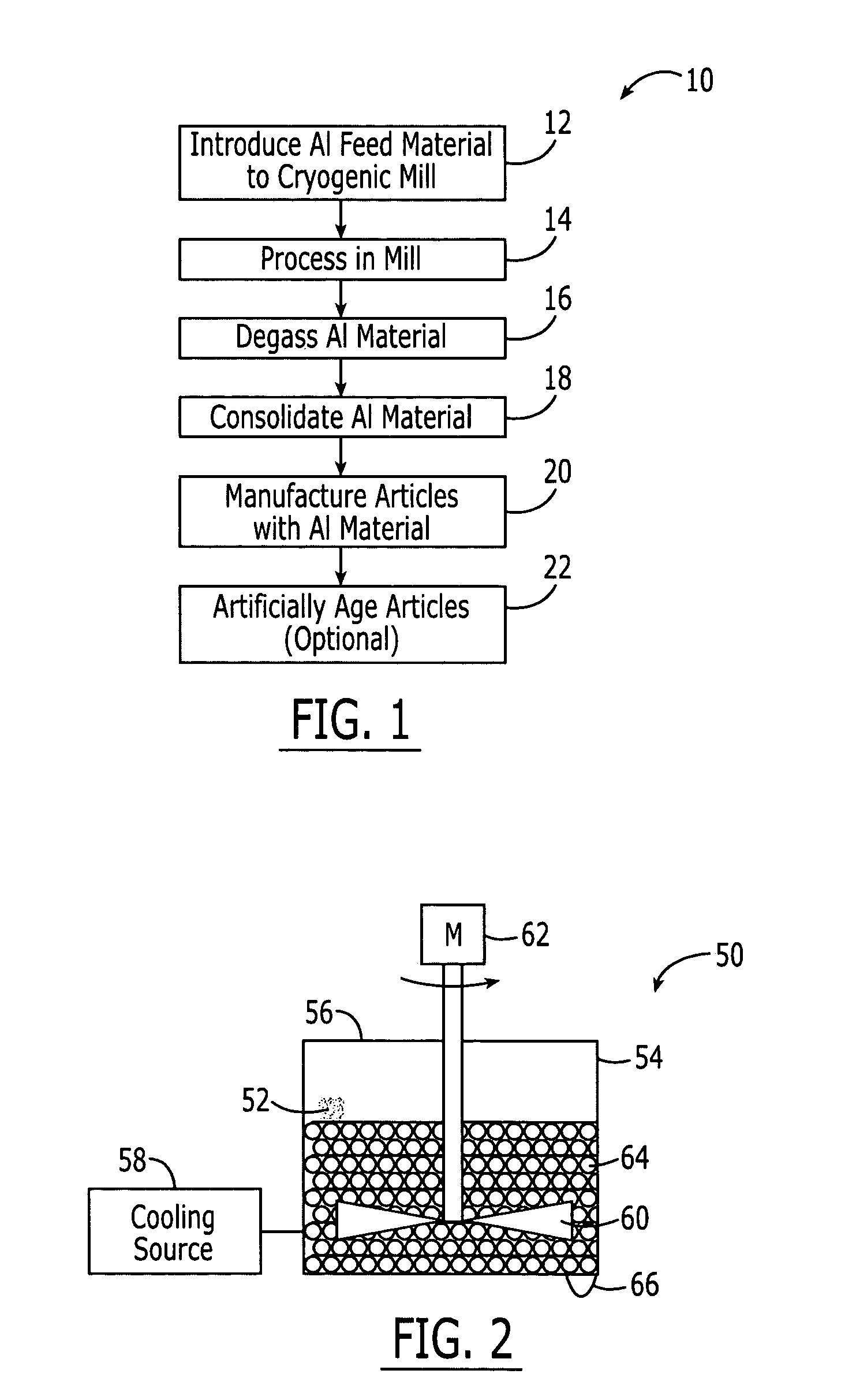[0006] The invention provides a pre-coated, high-strength and high-temperature aluminum or aluminum-alloy material component and method of making that component that may be used as a
structural component, and which is preferably used as a
fastener component. The component comprises an aluminum or aluminum-alloy material article having ultra-fine, submicron grain size and an organic
coating of phenolic resin applied to the surface of the article. The aluminum or aluminum-alloy material of the article is produced in a manner that results in increased strength in comparison to previous aluminum or aluminum-alloy material articles, and the pre-coating of the article provides
corrosion protection and fay-surface sealing capabilities that allow the resulting pre-coated component to be assembled into a structural
assembly without the need for the use of wet-
sealant materials.
[0009] The strength and physical properties of the aluminum or aluminum-alloy material components are improved over previous aluminum and aluminum-alloy components because the aluminum or aluminum-alloy material is cryomilled along with other associated
processing steps prior to formation of the components. Cryomilling is a
powder metallurgy process that modifies the chemical and metallurgical structural make-up of
metallic materials. When the cryomilling process, i.e., cryogenic milling, is applied to aluminum or aluminum-alloy powders, the metallic material is reduced and mechanically deformed to extremely
fine powder consistency and then is eventually re-consolidated. The cryomilling process produces an ultra-fine, submicron grain
microstructure in the processed material. As a rule, the finer the grain, the better the
formability and other associated characteristics.
[0010] The resulting cryomilled aluminum or aluminum-alloy material has improved material properties, the majority of which are directly dependent upon the ultra-fine submicron grain microstructure, in comparison to currently fabricated articles in which additional thermal or heat-treatment steps are necessary to offset the effects of cold-working imparted to the material during its manufacturing process.
[0012] The processed, nanocrystalline ultra-
fine grain material can then be subjected to the normal manufacturing steps associated with typical fasteners or other articles, including cold-working, but not requiring the additional subsequent
thermal treatment steps. In contrast, previous manufacturing practices call for considerable efforts involving several additional
processing steps to be taken in the thermal or heat-treatment
processing of aluminum and aluminum-alloy materials in order to ensure that the resulting material grain size is maintained at a level that is as small as possible. With the component of the present invention, improved control in the manufacturing process and alloying of the
chemical composition allow the resulting mechanical and chemical properties, e.g., elongation and
corrosion resistance, to be tailored in order to meet the requirements of high-strength and high-temperature component applications better than conventional, heat-treated aluminum and aluminum-alloy articles, such as standard processed aluminum-alloy materials. A primary cause of these improved benefits is the absence of coherent,
precipitation-hardening phases that are common in conventional thermal treatments normally utilized in conjunction with aluminum-alloy materials. These phases promote plastic strain localization, i.e.,
cracking,
stress corrosion cracking, etc.
[0013] After the nanocrystalline ultra-
fine grain material article is formed, the article is subjected to a pre-coating process, which entails the application of an organic coating containing a phenolic resin to form a pre-coated component. In general, the pre-coating process improves fatigue life and
corrosion resistance of the pre-coated component. The pre-coating is particularly advantageous when the pre-coated components are used as fasteners because, during subsequent installation, the pre-coated fasteners need not be installed in conjunction with wet-
sealant materials, wherein a
viscous liquid sealant is applied to the
fastener and the surrounding, adjacent surfaces of the components being assembled just before installing the fasteners. The
elimination of the wet-sealant installation practice offers a significant
cost savings among other benefits. The
elimination of the use of wet-sealants also improves the
workmanship in the
fastener installation, as there is no or greatly-reduced possibility of missing some of the fasteners as the wet-sealant is applied during installation. Further,
elimination of the wet sealant provides additional
cost savings related to time
delay, equipment, and manpower required for wet-sealant installation, and cost of clean-up and disposal of the toxic and hazardous wet-sealant materials.
[0014] The invented pre-coated ultra-
fine grain material component and method of making the pre-coated ultra-fine grain material component provide a component with improved strength, corrosion resistance, and ease of manufacture that was previously unavailable. Because the aluminum or aluminum-alloy material of the component is cryomilled, the metallic material need not be thermally-treated following fabrication and prior to installation. Because the component is pre-coated, the burdensome use of the labor-intensive and toxic wet-sealant material employed during its
assembly is avoided. The above advantages translate to decreased installation time and cost in an
industrial setting.
 Login to View More
Login to View More 


